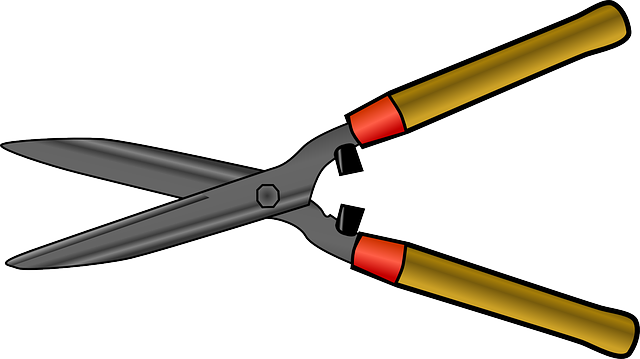Pyracantha coccinea, planting guide and care work
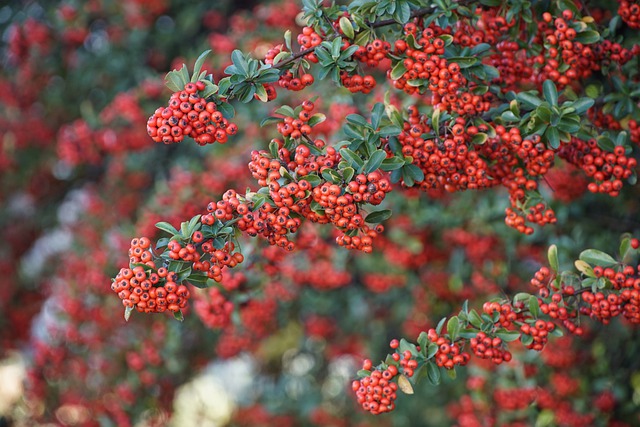
Pyracantha coccinea, also known as the Scarlet Firethorn, is a shrub that is part of the Rosaceae family, originating from southern Europe and Asia Minor. It forms a straight, upwards-oriented bush with a height of 2-3 m, it has branches with thorns, oval-lanceolate leaves, which are 2-4 cm long, shiny and dark green. Pyracantha coccinea blooms profusely between May and June, being decorative thanks to its white inflorescences, made up of small flowers (8 mm). Its ornamental qualities are accentuated by the abundant, red-orange, spherical fruits, 5-6 mm big.
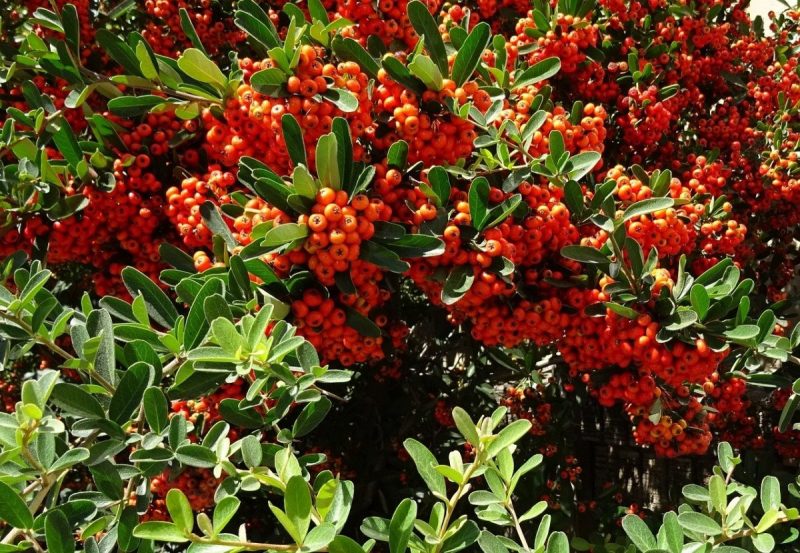
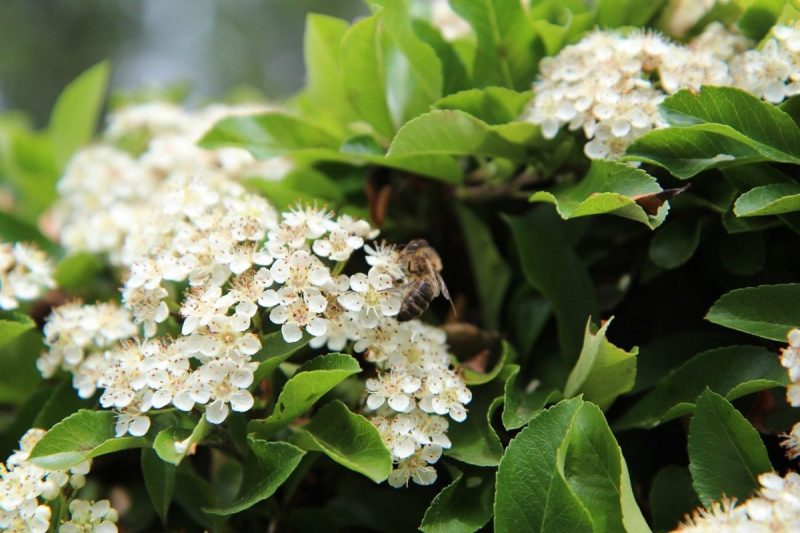
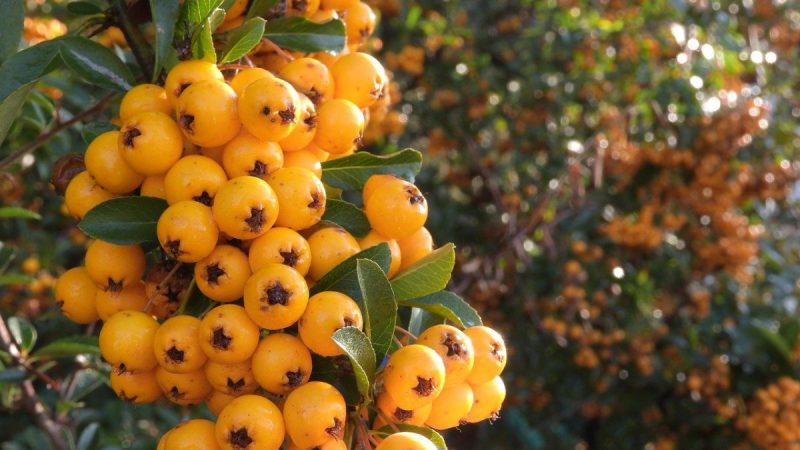
ENVIRONMENTAL CONDITIONS
Light. It grows both in partial shade and in direct sunlight, but specimens from partially shaded areas will produce fewer fruits compared to those located in sunny areas.
Temperature. It is a species resistant to drought and frost and it adapts quite well to different climatic conditions.
Soil. It has no specific requirements in terms of soil. However, it is recommended to avoid planting on heavy or excessively calcareous soils. It grows optimally in sandy, well-drained soils.
CARE WORKS
Water. Pyracanta coccinea is a drought-resistant species, but the young plants need regular watering until they are well rooted. Once the planting has been done successfully and they have adapted to the new environmental conditions, additional watering is only necessary during prolonged dry periods.
Fertilizing. For a vigorous growth as well as to emphasize the ornamental qualities, the periodic administration of specific fertilizers is recommended.
Recommended products
-
You can find products on a different store
Change Store -
You can find products on a different store
Change Store -
You can find products on a different store
Change Store -
You can find products on a different store
Change Store -
You can find products on a different store
Change Store -
You can find products on a different store
Change Store -
You can find products on a different store
Change Store -
You can find products on a different store
Change Store -
You can find products on a different store
Change Store -
You can find products on a different store
Change Store -
You can find products on a different store
Change Store -
You can find products on a different store
Change Store -
You can find products on a different store
Change Store -
You can find products on a different store
Change Store -
You can find products on a different store
Change Store -
You can find products on a different store
Change Store -
You can find products on a different store
Change Store -
You can find products on a different store
Change Store -
You can find products on a different store
Change Store -
You can find products on a different store
Change Store -
You can find products on a different store
Change Store -
You can find products on a different store
Change Store -
You can find products on a different store
Change Store -
You can find products on a different store
Change Store
Pruning. Light trimming can be done once a year to maintain the aesthetic appearance and to stimulate the healthy growth. It is recommended that the pruning be carried out after flowering, in order not to remove the flower buds. A drastic trimming can compromise the next year’s flowers, because they form on the previous year’s growths. If big cuttings are required, it is best to do them at the end of winter.
Recommended products
-
You can find products on a different store
Change Store -
You can find products on a different store
Change Store -
You can find products on a different store
Change Store -
You can find products on a different store
Change Store -
You can find products on a different store
Change Store -
You can find products on a different store
Change Store -
You can find products on a different store
Change Store -
You can find products on a different store
Change Store -
You can find products on a different store
Change Store -
You can find products on a different store
Change Store -
You can find products on a different store
Change Store -
You can find products on a different store
Change Store -
You can find products on a different store
Change Store -
You can find products on a different store
Change Store -
You can find products on a different store
Change Store -
You can find products on a different store
Change Store -
You can find products on a different store
Change Store -
You can find products on a different store
Change Store -
You can find products on a different store
Change Store -
You can find products on a different store
Change Store -
You can find products on a different store
Change Store -
You can find products on a different store
Change Store -
You can find products on a different store
Change Store -
You can find products on a different store
Change Store
Given that it has thorns, it is recommended to use a suitable protective equipment (gloves), as well as scissors with longer handles.
Recommended products
-
You can find products on a different store
Change Store -
You can find products on a different store
Change Store -
You can find products on a different store
Change Store -
You can find products on a different store
Change Store -
You can find products on a different store
Change Store -
You can find products on a different store
Change Store -
You can find products on a different store
Change Store -
You can find products on a different store
Change Store -
You can find products on a different store
Change Store -
You can find products on a different store
Change Store -
You can find products on a different store
Change Store -
You can find products on a different store
Change Store -
You can find products on a different store
Change Store -
You can find products on a different store
Change Store -
You can find products on a different store
Change Store -
You can find products on a different store
Change Store -
You can find products on a different store
Change Store -
You can find products on a different store
Change Store -
You can find products on a different store
Change Store -
You can find products on a different store
Change Store -
You can find products on a different store
Change Store -
You can find products on a different store
Change Store -
You can find products on a different store
Change Store -
You can find products on a different store
Change Store
Propagation. It can be done in the summer with semi-lignified cuttings, which are rooted in a special substrate. At the same time, it can also be done by seeds (harvested in the fall, after the fruits have ripened), after they have been previously layered.
Recommended products
-
You can find products on a different store
Change Store -
You can find products on a different store
Change Store -
You can find products on a different store
Change Store -
You can find products on a different store
Change Store -
You can find products on a different store
Change Store -
You can find products on a different store
Change Store -
You can find products on a different store
Change Store -
You can find products on a different store
Change Store -
You can find products on a different store
Change Store -
You can find products on a different store
Change Store -
You can find products on a different store
Change Store -
You can find products on a different store
Change Store -
You can find products on a different store
Change Store -
You can find products on a different store
Change Store -
You can find products on a different store
Change Store -
You can find products on a different store
Change Store -
You can find products on a different store
Change Store -
You can find products on a different store
Change Store -
You can find products on a different store
Change Store -
You can find products on a different store
Change Store -
You can find products on a different store
Change Store -
You can find products on a different store
Change Store -
You can find products on a different store
Change Store -
You can find products on a different store
Change Store
Planting. It can be planted in spring or autumn, during the dormancy period, at temperatures above 5 °C, if the soil is not frozen and there is no danger of frost. Make sure you purchase the planting material from authorized nurseries. Pyracantha is planted with a lump of earth on its roots.
Recommended products
-
You can find products on a different store
Change Store -
You can find products on a different store
Change Store -
You can find products on a different store
Change Store -
You can find products on a different store
Change Store -
You can find products on a different store
Change Store -
You can find products on a different store
Change Store -
You can find products on a different store
Change Store -
You can find products on a different store
Change Store -
You can find products on a different store
Change Store -
You can find products on a different store
Change Store -
You can find products on a different store
Change Store -
You can find products on a different store
Change Store -
You can find products on a different store
Change Store -
You can find products on a different store
Change Store -
You can find products on a different store
Change Store -
You can find products on a different store
Change Store -
You can find products on a different store
Change Store -
You can find products on a different store
Change Store -
You can find products on a different store
Change Store -
You can find products on a different store
Change Store -
You can find products on a different store
Change Store -
You can find products on a different store
Change Store -
You can find products on a different store
Change Store -
You can find products on a different store
Change Store
Diseases and pests. Pyracantha coccinea is a fairly resistant species, but it can be susceptible to the attack of fire blight, scab disease, as well as to the attack of pests such as aphids, wooly apple aphids, European fruit lecanium, etc. In addition to undertaking specific measures depending on the pest/pathogen present, it is also recommended to carry out treatments with suitable products (fungicides/insecticides).
Recommended products
-
You can find products on a different store
Change Store -
You can find products on a different store
Change Store -
You can find products on a different store
Change Store -
You can find products on a different store
Change Store -
You can find products on a different store
Change Store -
You can find products on a different store
Change Store -
You can find products on a different store
Change Store -
You can find products on a different store
Change Store -
You can find products on a different store
Change Store -
You can find products on a different store
Change Store -
You can find products on a different store
Change Store -
You can find products on a different store
Change Store -
You can find products on a different store
Change Store -
You can find products on a different store
Change Store -
You can find products on a different store
Change Store -
You can find products on a different store
Change Store -
You can find products on a different store
Change Store -
You can find products on a different store
Change Store -
You can find products on a different store
Change Store -
You can find products on a different store
Change Store -
You can find products on a different store
Change Store -
You can find products on a different store
Change Store -
You can find products on a different store
Change Store -
You can find products on a different store
Change Store
Recommended products
-
You can find products on a different store
Change Store -
You can find products on a different store
Change Store -
You can find products on a different store
Change Store -
You can find products on a different store
Change Store -
You can find products on a different store
Change Store -
You can find products on a different store
Change Store -
You can find products on a different store
Change Store -
You can find products on a different store
Change Store -
You can find products on a different store
Change Store -
You can find products on a different store
Change Store -
You can find products on a different store
Change Store -
You can find products on a different store
Change Store -
You can find products on a different store
Change Store -
You can find products on a different store
Change Store -
You can find products on a different store
Change Store -
You can find products on a different store
Change Store -
You can find products on a different store
Change Store -
You can find products on a different store
Change Store -
You can find products on a different store
Change Store -
You can find products on a different store
Change Store -
You can find products on a different store
Change Store -
You can find products on a different store
Change Store -
You can find products on a different store
Change Store -
You can find products on a different store
Change Store
Additionally:
- Although aesthetically very pleasant, the flowers emit an unpleasant smell.
- They are planted as solitary shrubs, hedges, in groups or as plants in flowerpots.
- It can also grow in flowerpots, but it is quite sensitive to transplanting, and therefore, it is recommended to choose a pot with a suitable size (since it grows quickly), so that transplanting is not necessary. At the same time, it is very important that the flowerpot has drainage holes.















































































































































































































































































































































































































































